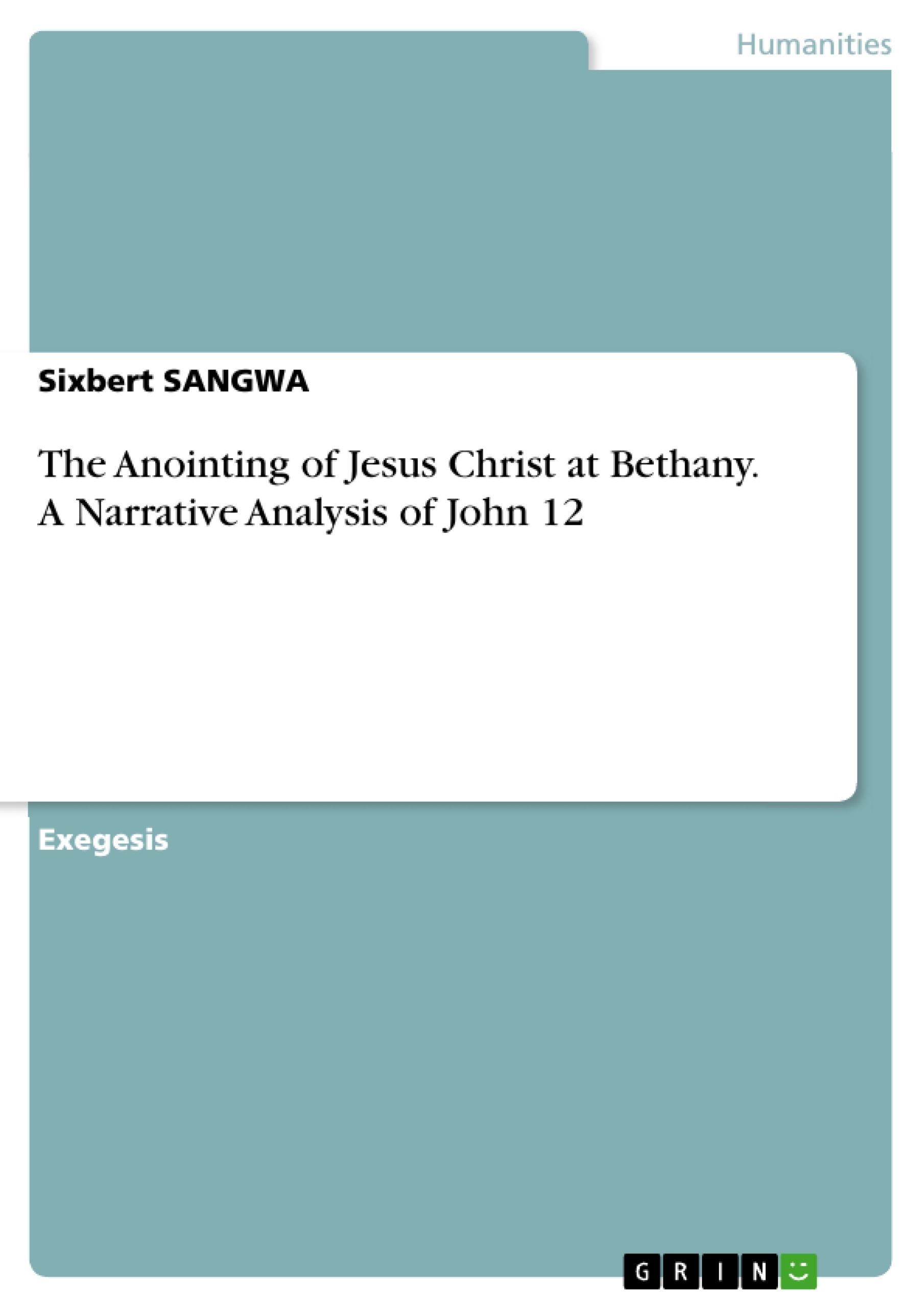In this article, we will apply the narrative analysis to the episode of Jesus' anointing at Bethany in the Gospel of John with the aim of raising questions rather than bringing conclusions.
In the course of the research, starting from Maria of Bethania, we broadened our horizon to look at other women in John as well. The ordering of the narratives and other details of the gospel perceived converge to think of a discipleship itinerary from the women. They are presented as disciples, followers and who present the process of profession of faith in Christ.
Inhaltsverzeichnis (Table of Contents)
- Introduction
- A delimitation of the pericope
- Application of the quinary scheme
- Theology of the story
Zielsetzung und Themenschwerpunkte (Objectives and Key Themes)
The article aims to analyze the narrative of Jesus' anointing at Bethany in John 12 using a synchronic approach. It seeks to explore the story's narrative structure and its theological significance, raising questions rather than providing definitive conclusions. The article focuses on the discipleship journey of women in John's gospel, particularly Mary of Bethany, and her role in foreshadowing the resurrection and glory of Jesus.
- Narrative analysis of the anointing of Jesus at Bethany in John 12
- Discipleship and faith in Christ as portrayed by women in John's gospel
- Theological significance of Mary of Bethany's anointing gesture
- The contrast between Mary's devotion and Judas's self-interest
- The role of the anointing in foreshadowing Jesus' death and resurrection
Zusammenfassung der Kapitel (Chapter Summaries)
- Introduction: This chapter introduces the synchronic approach to biblical interpretation, focusing on narrative analysis. It outlines the purpose of the article, which is to analyze the anointing of Jesus at Bethany in John 12, and to explore the theological significance of the story.
- A delimitation of the pericope: This section defines the specific pericope under analysis (Jn 12:1-8) by identifying the changes in time, space, characters, and themes that mark its beginning and end. It also highlights the differences between John's account and those of the Synoptic Gospels.
- Application of the quinary scheme: This chapter breaks down the pericope into five elements (exposure, knot, complication, outcome, and resolution) and examines how these elements contribute to the narrative's overall structure and meaning. It analyzes the events and characters within each stage of the narrative.
Schlüsselwörter (Keywords)
The article focuses on the narrative analysis of the anointing of Jesus at Bethany in John 12, examining themes of discipleship, faith, love, and the foreshadowing of Jesus' death and resurrection. It explores the roles of Mary of Bethany and Judas Iscariot in the narrative, highlighting the contrasting attitudes of devotion and self-interest. The article also considers the theological significance of the anointing gesture and its connection to the symbolism of the Song of Songs.
- Quote paper
- Dr. Sixbert SANGWA (Author), 2021, The Anointing of Jesus Christ at Bethany. A Narrative Analysis of John 12, Munich, GRIN Verlag, https://www.grin.com/document/1020948




